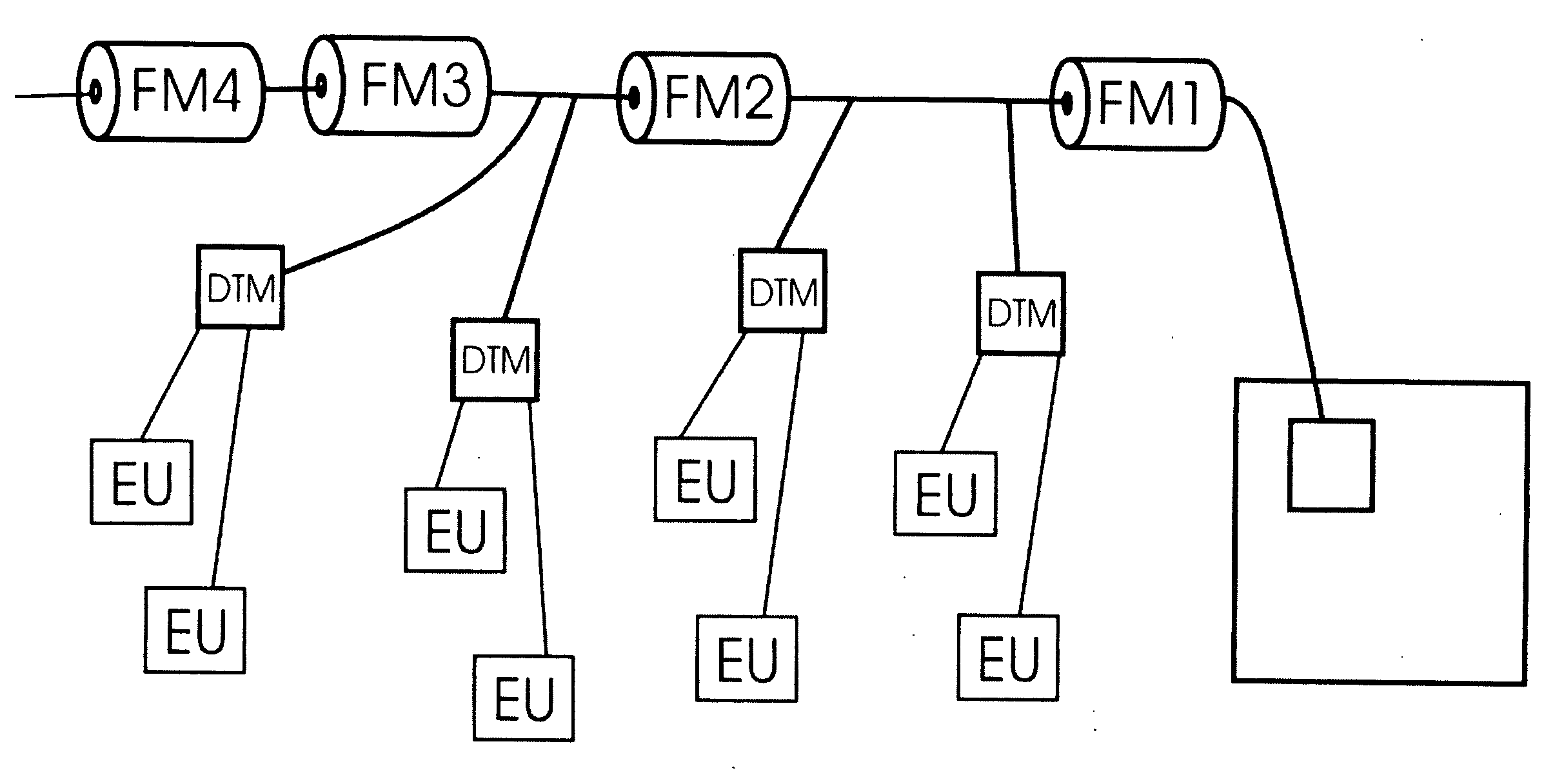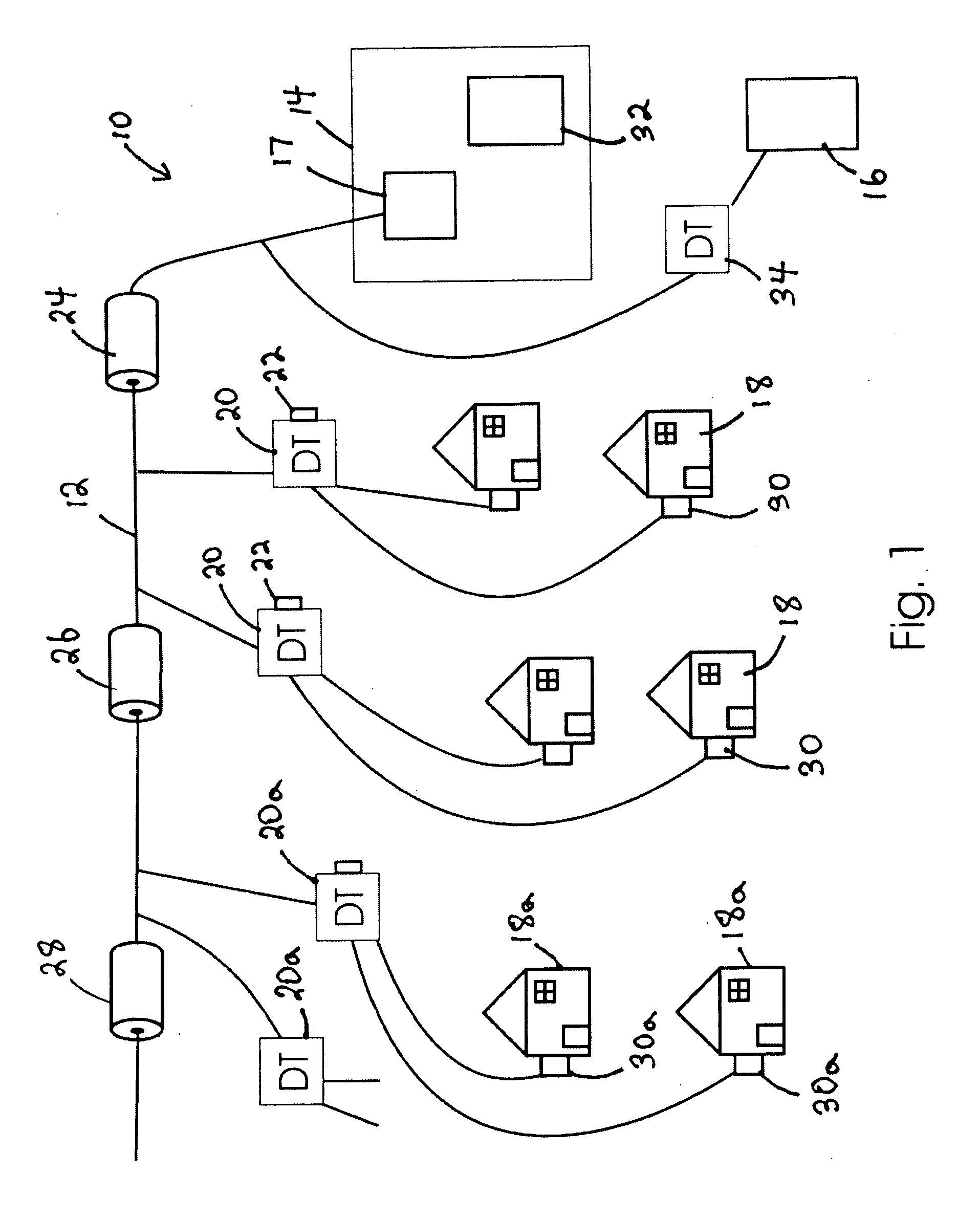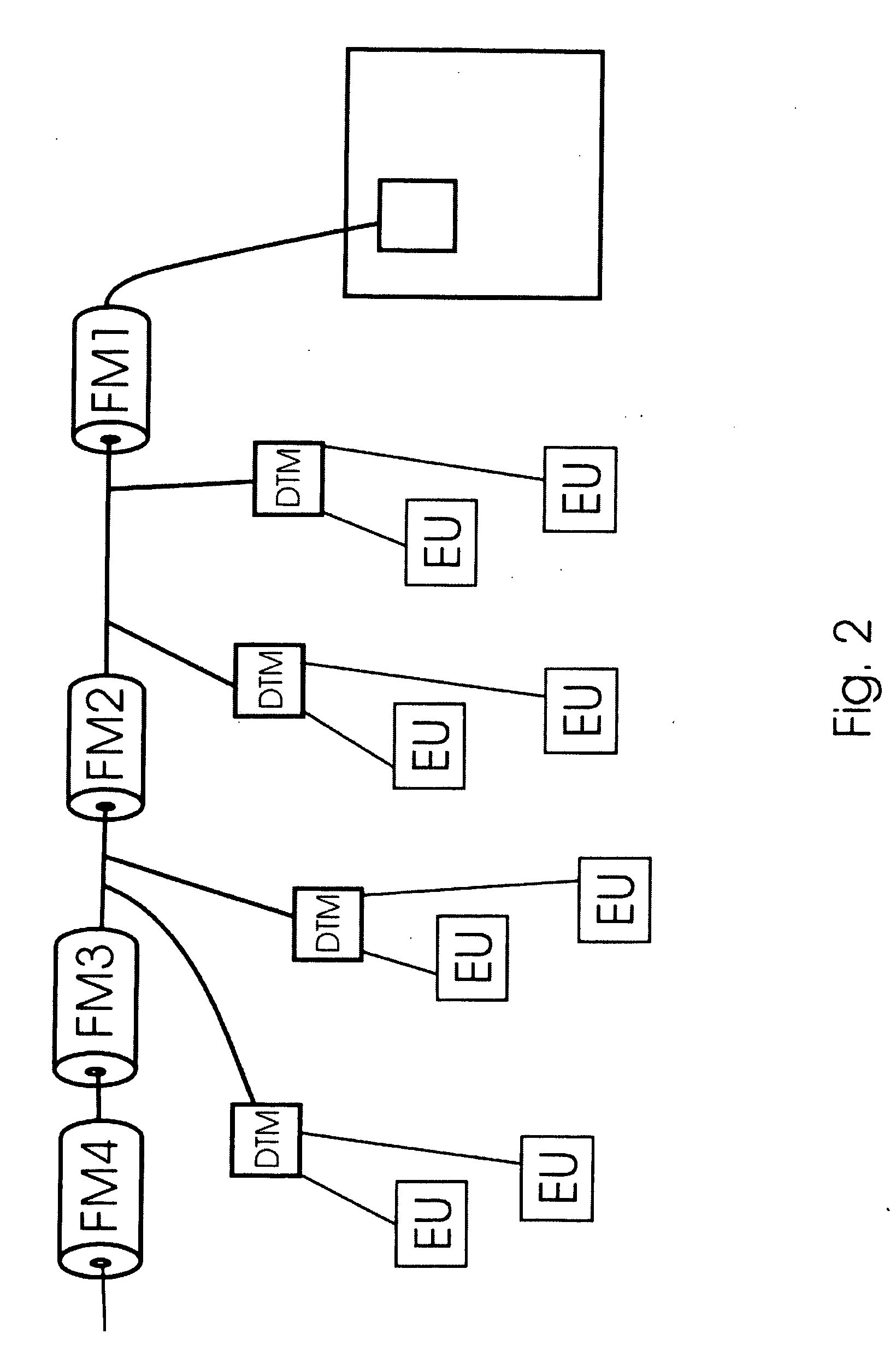System for Accurately Detecting Electricity Theft
a technology for accurately detecting electricity theft and electricity theft, which is applied in the direction of power distribution line transmission, powerline communication applications, instruments, etc., can solve the problems of high-voltage theft, feeder meter design and construction, and high cost of high-voltage devices
- Summary
- Abstract
- Description
- Claims
- Application Information
AI Technical Summary
Benefits of technology
Problems solved by technology
Method used
Image
Examples
Embodiment Construction
[0012]Energy accounting as a method of detecting electricity theft can be very effective at the distribution transformer level because of the small number of customers involved. Errors due to line losses may be 0.5% to 3% and the number of customers may be no more than ten. In this case the total amount of energy lost to the lines would amount to no more than a fraction of the amount used by a single customer, and an even smaller fraction of the amount likely to be involved in any theft.
[0013]At the feeder level, the situation is different because many more customers are involved. Here the energy lost in the lines is likely to be many times greater than the amount used by a single customer. Thus, the detection of theft is more difficult, and the sensitivity and reliability of the method is heavily dependent on the accuracy of the energy accounting process.
[0014]An improvement in the accuracy of the energy accounting process can be achieved by estimating the line losses and compensat...
PUM
 Login to View More
Login to View More Abstract
Description
Claims
Application Information
 Login to View More
Login to View More - R&D
- Intellectual Property
- Life Sciences
- Materials
- Tech Scout
- Unparalleled Data Quality
- Higher Quality Content
- 60% Fewer Hallucinations
Browse by: Latest US Patents, China's latest patents, Technical Efficacy Thesaurus, Application Domain, Technology Topic, Popular Technical Reports.
© 2025 PatSnap. All rights reserved.Legal|Privacy policy|Modern Slavery Act Transparency Statement|Sitemap|About US| Contact US: help@patsnap.com



